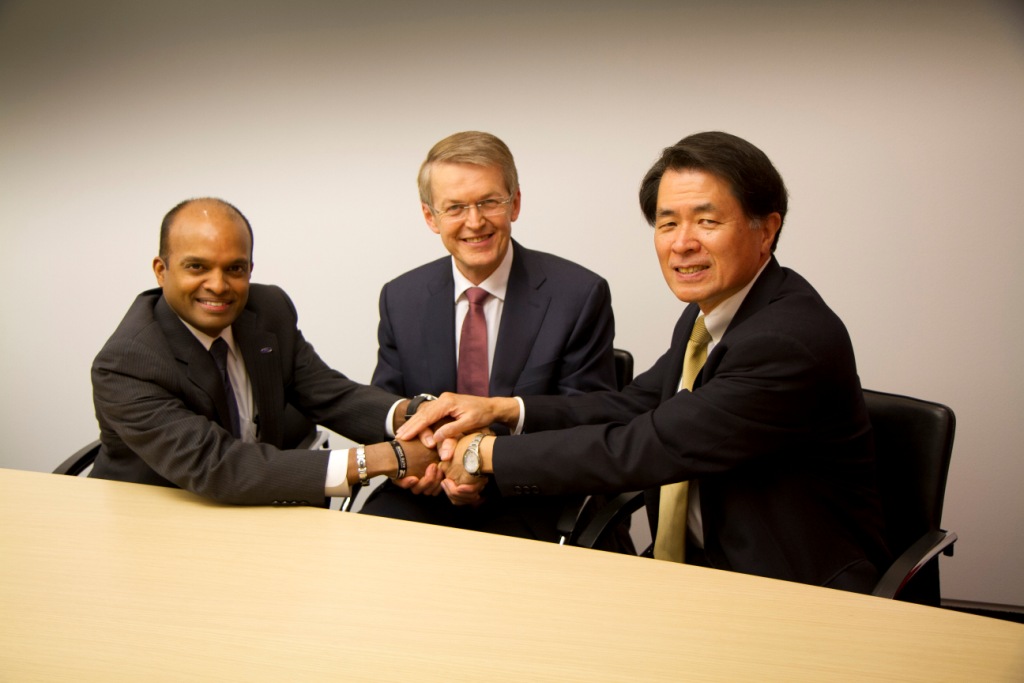
(L-R) Raj Nair, Group Vice President, Global Product Development, Ford Motor Company, Prof. Thomas Weber, Member of the Board of Management of Daimler AG, Group Research & Mercedes-Benz Cars Development and Mitsuhiko Yamashita, Member of the Board of Directors and Executive Vice President of Nissan Motor Co., Ltd., supervising Research and Development. (Image: Daimler AG)
Germany (Jan. 28, 2013) - Daimler AG, Ford Motor Company and Nissan Motor Co., Ltd., have signed a unique three-way agreement to accelerate the commercialization of fuel cell electric vehicle (FCEV) technology. The goal of the collaboration is to jointly develop a common fuel cell electric vehicle system while reducing investment costs associated with the engineering of the technology. Each company will invest equally towards the project. The strategy to maximize design commonality, leverage volume and derive efficiencies through economies of scale will help to launch the world’s first affordable, mass-market FCEVs as early as 2017.
Together, Daimler, Ford and Nissan have more than 60 years of cumulative experience developing FCEVs. Their FCEVs have logged more than 10 million km in test drives around the world in customers’ hands and as part of demonstration projects in diverse conditions. The partners plan to develop a common fuel cell stack and fuel cell system that can be used by each company in the launch of highly differentiated, separately branded FCEVs, which produce no CO2 emissions while driving.




